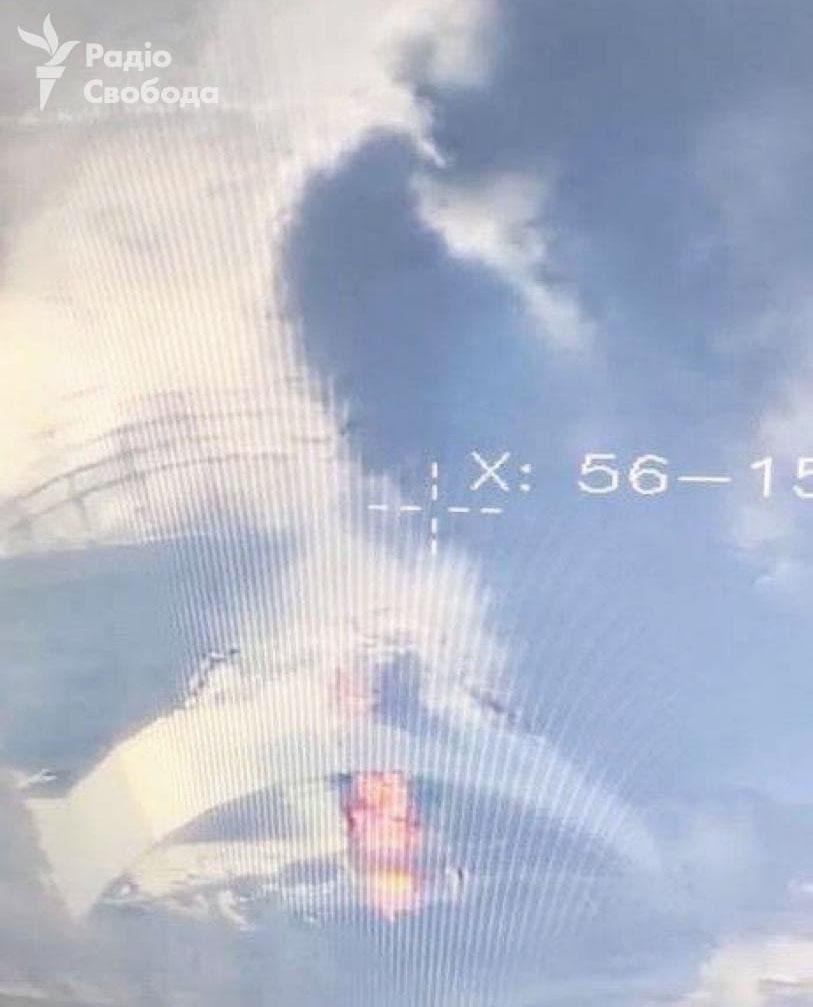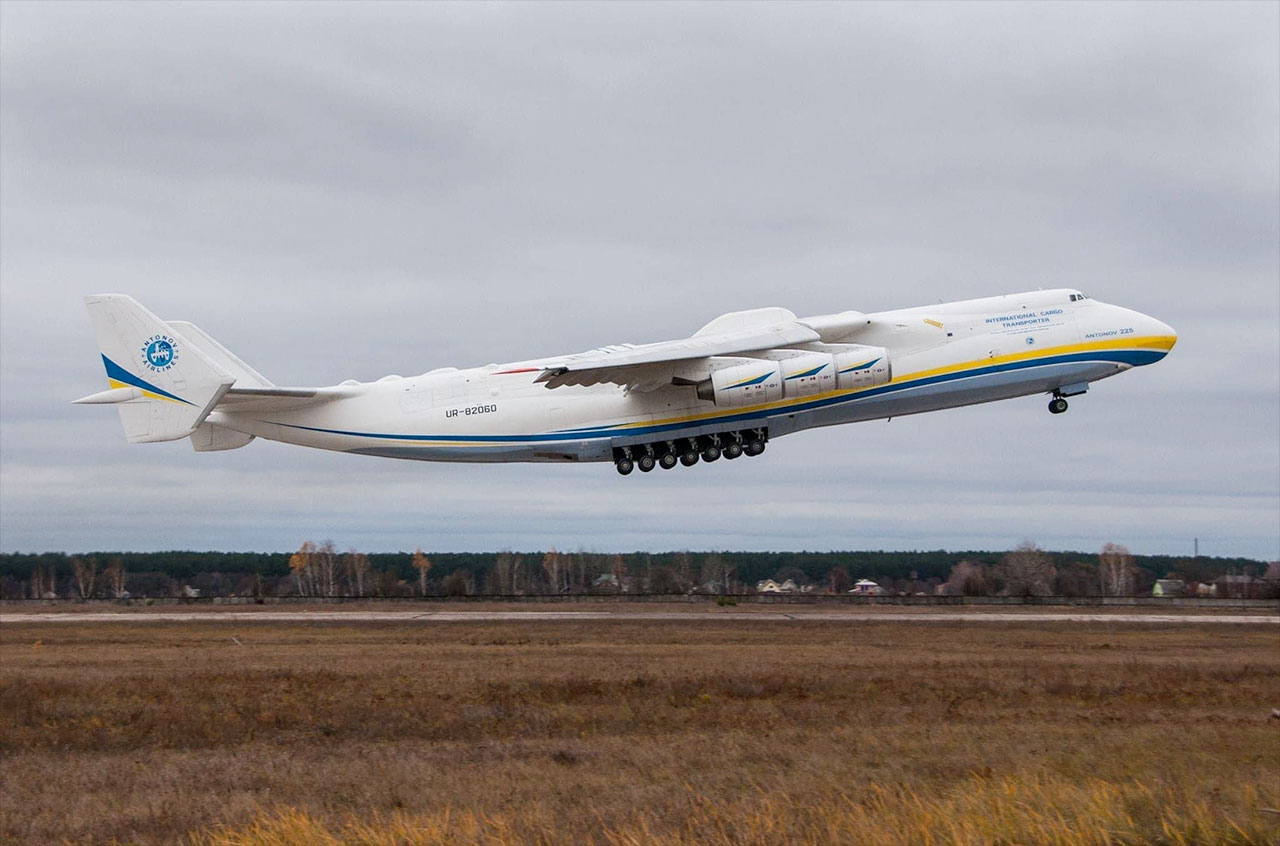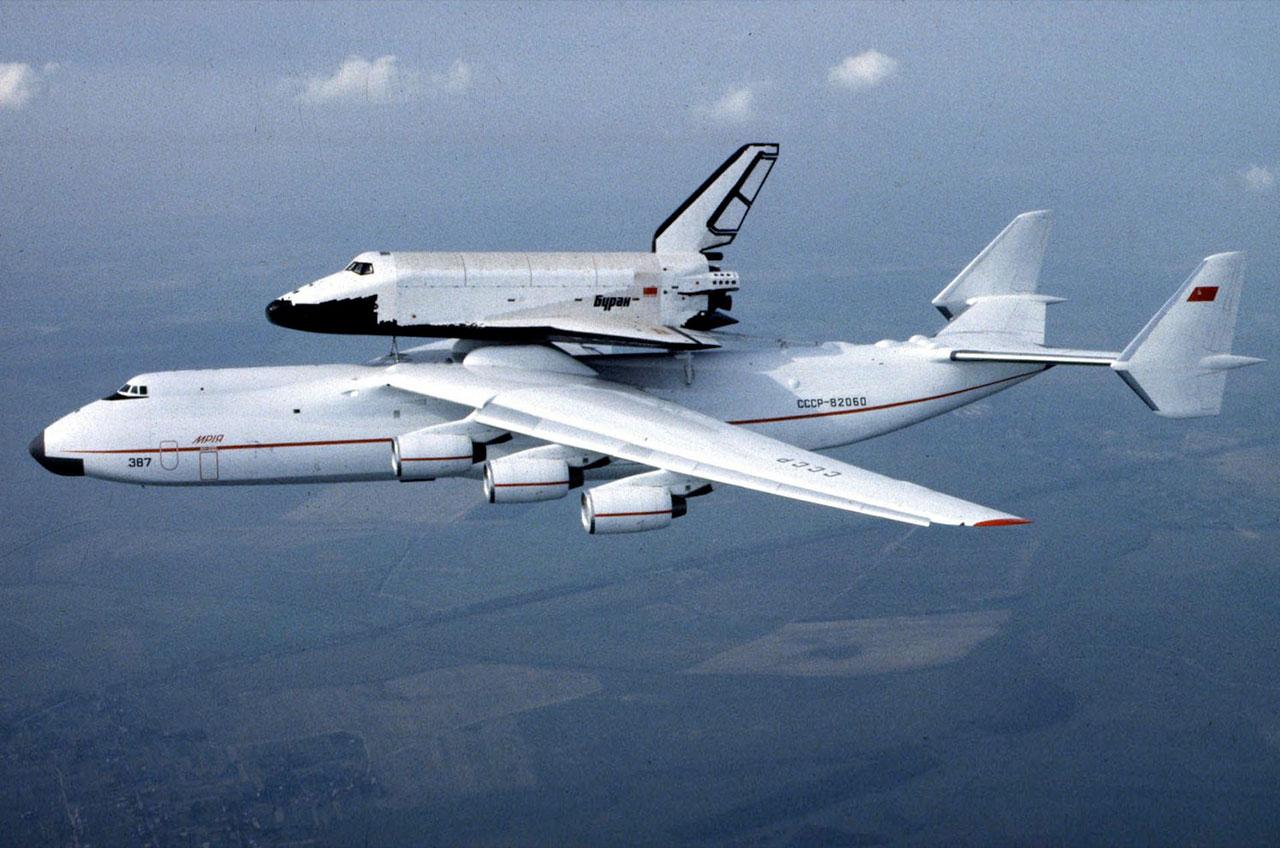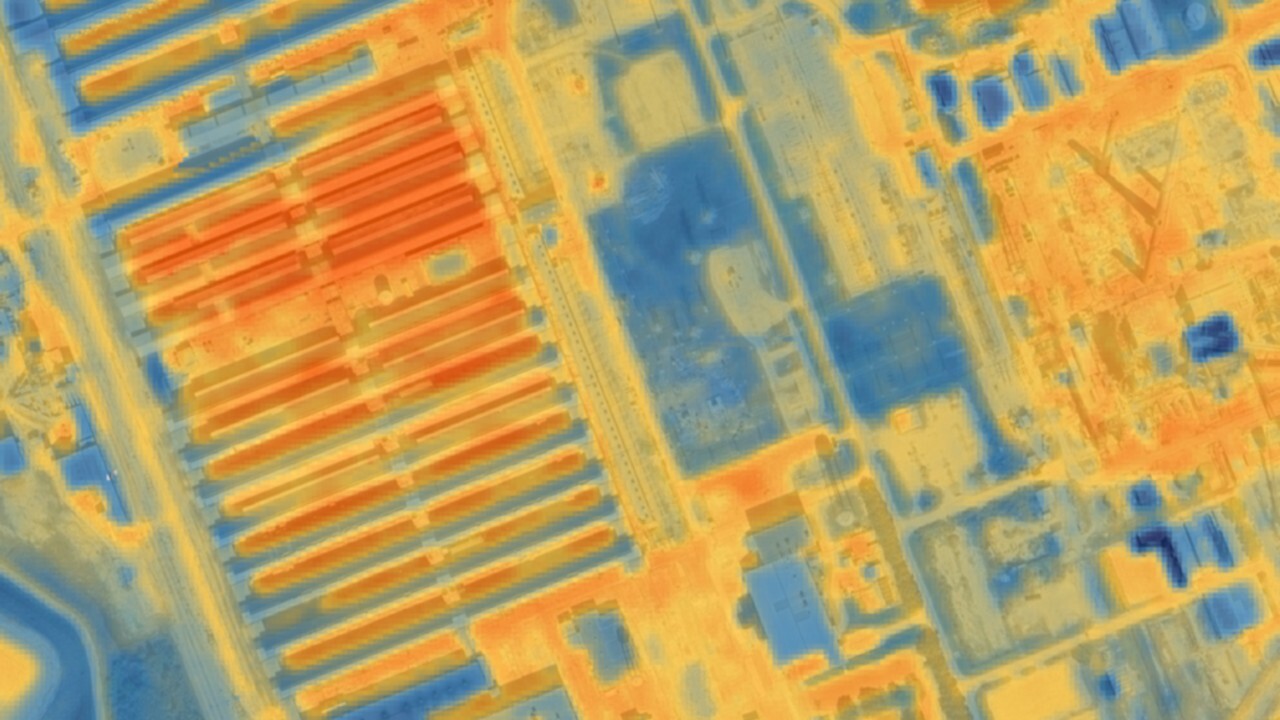Soviet-era space shuttle carrier aircraft destroyed in Russian attack on Ukraine
The AN-225 Antonov "Mriya" ("Dream") will fly no more.

Russia's invasion of Ukraine has destroyed a "large" part of its own space history, with reports now confirming the fate of an enormous aircraft that was originally built to transport Soviet space shuttles.
Once the world's largest flying machine by both wingspan and weight, the Antonov An-225 "Mriya" ("Dream") was parked in an open-air hangar undergoing repairs at Hostomel (or Gostomel) airport, located to the northwest of Ukraine's capital city of Kyiv, when Russia launched its attack against the country on Thursday (Feb. 24).
Four days later, the news came that the one-of-a-kind aircraft was no more.
Related: Buran: The Soviet space shuttle
"The biggest plane in the world, "Mriya" (The Dream), was destroyed by Russian occupants on an airfield near Kiev," the official Twitter account for the country of Ukraine reported on Sunday.
The Antonov Company, which since 2001 has operated the AN-225 as a heavy-lift cargo freighter, also took to Twitter to say it could not confirm the aircraft's status.
"Currently, until the AN-225 has been inspected by experts, we cannot report on the technical condition of the aircraft," the company wrote.
Breaking space news, the latest updates on rocket launches, skywatching events and more!
The news followed a string of unconfirmed reports that the Mriya had come under fire by Russian helicopters in an attack against the airport on Friday. The chief pilot for Antonov Airlines, the air transportation division of the Antonov Company, confirmed the attack but said that the aircraft was still intact in a post he made on Facebook that same day.
"Hostomel airport now under Russian airborn [sic] forces," wrote Dmitry Antonov. "From the positive, Mriya is whole."
Later, Radio Liberty circulated on social media a photo, possibly taken by a drone, showing a fire rising from a hangar that appeared to match the known location of the AN-225. Aircraft enthusiasts shared marked up versions of the image, labeling what could be the Mriya's engines protruding out from the hangar.
Ukroboronprom, the state-owned defense corporation under which the Antonov Company operates, declared the AN-225 lost in a statement posted to its website on Sunday afternoon.
"Russia has targeted Mriya as a symbol of the capabilities of Ukrainian aviation," the statement read. "The occupiers destroyed the plane, but they will not be able to destroy our common dream. She will definitely be reborn."
"It is estimated that this will take more than $3 billion and more than five years. Our task is to ensure that these costs are covered by the Russian Federation, which caused intentional damage to Ukrainian aviation and the air cargo sector," the corporation's officials said.
Related: Russia halts Soyuz launches from French Guiana over Ukraine invasion sanctions

The history of the AN-225, with its 290-foot-long (88.4 meters) wingspan, dates back to 1985, when it was built to replace and augment smaller aircraft for the purpose of delivering Energia rocket boosters and Buran-class space shuttle orbiters to their launch site. Similar in use but much larger than the modified Boeing 747 jetliners that served as NASA's two Shuttle Carrier Aircraft, the AN-225 carried the winged spacecraft piggyback.
Of the two AN-225 aircraft to begin construction, only one was completed before the Soviet Union fell in 1991. The Buran program was cancelled two years later, having launched only a single uncrewed test flight in 1988.
After sitting in storage for several years, the AN-225 was restored to flight as a heavy-lift cargo plane. In addition to flying payloads once considered too massive to transport by air, the AN-225 was also used to deliver emergency supplies to disaster relief areas. The aircraft was most recently used to fly medical supplies in response to the COVID-19 pandemic.
The destruction of the AN-225 comes almost two decades after the only Buran to fly into space was also destroyed, the result of a hangar collapse in May 2002.
The invasion into Ukraine and the subsequent sanctions imposed on it as a result have also affected Russia's current activities in space, with the nation's space agency Roscosmos deciding to pull its support for Soyuz launches from Europe's spaceport in French Guiana and dropping U.S. participation in the country's long-delayed Venera-D mission to study Venus.
Russia's ongoing participation in the International Space Station has also been called into question, though both Roscosmos and NASA officials have said that the partnership on board the orbiting complex and at ground support stations is without change.
Follow collectSPACE.com on Facebook and on Twitter at @collectSPACE. Copyright 2022 collectSPACE.com. All rights reserved.

Robert Pearlman is a space historian, journalist and the founder and editor of collectSPACE.com, a daily news publication and community devoted to space history with a particular focus on how and where space exploration intersects with pop culture. Pearlman is also a contributing writer for Space.com and co-author of "Space Stations: The Art, Science, and Reality of Working in Space” published by Smithsonian Books in 2018.
In 2009, he was inducted into the U.S. Space Camp Hall of Fame in Huntsville, Alabama. In 2021, he was honored by the American Astronautical Society with the Ordway Award for Sustained Excellence in Spaceflight History. In 2023, the National Space Club Florida Committee recognized Pearlman with the Kolcum News and Communications Award for excellence in telling the space story along the Space Coast and throughout the world.



